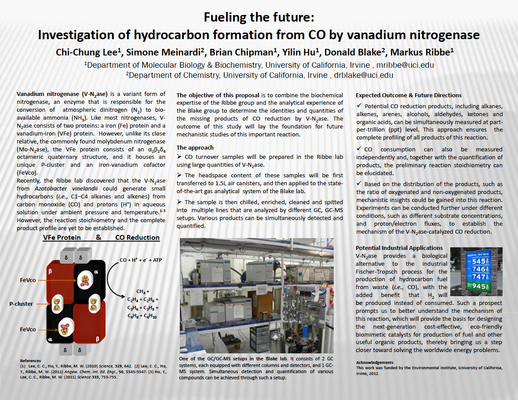Fueling the future: Investigation of hydrocarbon formation from CO by vanadium nitrogenase
The global energy shortage has made it an urgent task to find an effective approach to fuel production. Currently, Fischer Tropsch (FT) synthesis is employed as a large-scale process to produce liquid carbon fuels from carbon monoxide (CO) and hydrogen (H2) on late transition metal catalysts; however, this process requires the costly syngas (H2), a large physical infrastructure, and high temperature (150-3000C) and pressure (one to several tens of atmospheres). The recent discovery by the Ribbe lab that vanadium (V)-nitrogenase from Azotobacter vinelandii can generate hydrocarbons (C1 – C4) from CO and protons (H+)[1-3] under ambient pressure and temperature provides a biological blueprint of an alternative catalyst for CO reduction. Understanding the mechanism of V-nitrogenase-based CO reduction will provide the basis for designing the next generation of cost-effective, eco-friendly biomimetic catalysts for fuel production, thereby bringing us a huge step closer toward solving the worldwide energy problems.
As exciting as the discovery is of V-nitrogenase’s ability to reduce CO, as little as our knowledge is of the chemical details of this reaction. Currently, the stoichiometry of this reaction and, above all, the complete product profile, has not been established. The objective of this proposal is to combine the biochemical expertise of the Ribbe group and the analytical experience of the Blake group to determine the identities and quantities of missing products of CO reduction by V-nitrogenase. The outcome of this study will lay the foundation for future mechanistic studies of this important reaction.

